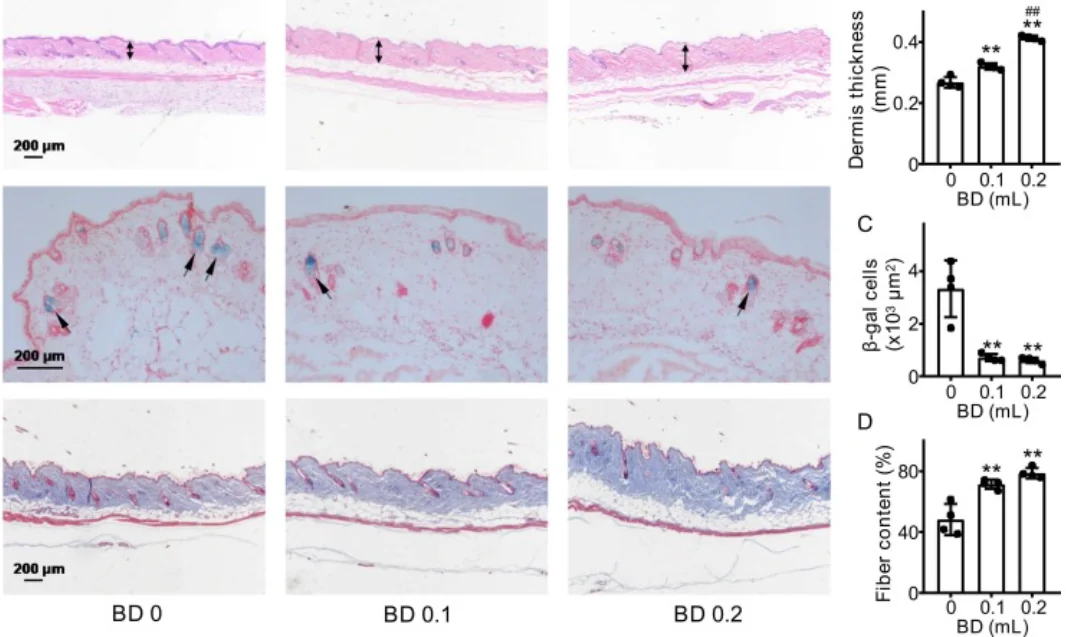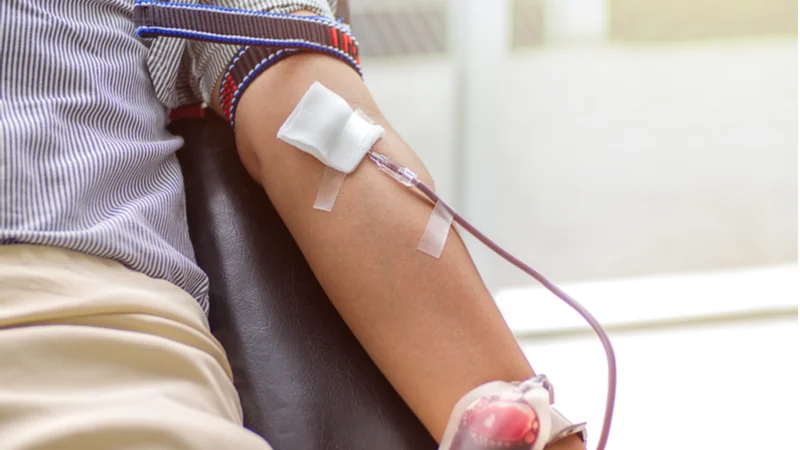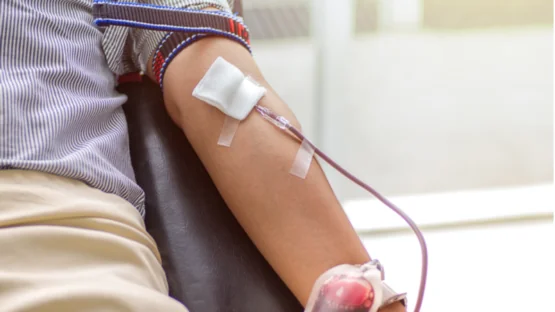Scientists have shown that blood donation strongly affects skin aging in mice, probably by lowering the levels of toxic free iron [1].
The good bloodshed
Before the dawn of modern medicine, bloodletting was one of the favorite arrows in medieval doctors’ quivers. Of course, it was a savage and unscientific instrument that probably did more harm than good, especially in gravely ill patients, but could the idea have a grain of truth to it?
Today, bloodletting is no longer practiced, but many people voluntarily donate their blood, saving the lives of others. There have been attempts by scientists to understand how blood donations affect the donor’s health. One study links blood donation to a reduced risk of myocardial infarction [2] and another one to a lower incidence of cancer [3]. A single blood donation is equivalent to burning 500 calories. Finally, blood donation makes donors feel better about themselves, which can affect health as well. On the other hand, frequent blood donations may slightly increase the risk of coronary heart disease [4].
However, these results were gathered from mostly uncontrolled population studies that could be heavily contaminated by healthy donor bias: people who donate blood are usually healthier than their age-matched peers, and they get screened for various health problems. This makes mouse studies unusually valuable, because scientists can easily match the study group and controls in terms of health and age.
Thick-skinned mice
In this new study, the researchers investigated the effect of blood donation on skin aging. To imitate blood donation, 64-week-old aging mice were relieved of 100 μL or 200 μL of blood once every two weeks. As a result, the donors became much leaner than controls, with decreased body weight and fat percentages. However, there was no significant difference in the weight of major organs, except for a notable increase in spleen mass, probably due to intensified spleen hematopoiesis.
The treatment also decreased the percentage of fat in the liver and the size of adipocytes; adipocyte hypertrophy is a sign of fat tissue dysfunction. No serious side effects were observed. In all the experiments, significant effects were achieved in both the 100 μL and the 200 μL groups, although some results were dose-dependent.
Blood donation also improved skin condition. The thickness of the dermis, the collagen content in the skin, and the production of type I and type III collagen substantially increased, while the number of β-galactosidase-positive senescent cells plummeted.

The researchers then analyzed changes in gene expression caused by blood donation. 63 DEGs (differently expressed genes) were identified, including genes participating in many age-related pathways, such as estrogen, mTOR, and NF-kB signaling pathways.
The treatment also resulted in significant metabolic alterations in pathways involved in crucial processes such as Krebs cycle and amino acid metabolism. Levels of several metabolites that are known to protect from oxidative stress, such as glutathione, increased significantly.
Lose that iron
Blood donation predictably led to a decrease in iron concentration in serum and the liver, but also in the skin. Iron plays an important role in aging. In general, this chemical element is toxic since it causes oxidative stress via increased production of reactive oxygen species; when you are saying you have become rusty, this might be more than just a metaphor. Therefore, iron is mostly stored in the body as non-toxic ferritin, and it accumulates with age. However, stress factors such as UV radiation can release iron, exacerbating oxidative stress. It has been shown that exposure to the sun leads to a release of iron in the skin [5].
Interestingly, women can get rid of excess iron via menstruation; iron and ferritin levels increase past menopause, which coincides with rapid skin aging [6]. Blood donation can be seen as emulating this process. This might be the reason why one study recommends that older people continue donating blood into later life [7].
Blood donation is associated with many benefits, including decreases in blood pressure, lower risk of cardiovascular disease, and improved plasma lipid profiles. In our present study, we observed that blood donation had impacts on lipid metabolism with decreased body fat mass rate and liver lipid levels. Blood donation also led to improvement in skin aging. We investigated the effect of blood donation on skin aging by analyzing histological and clinical changes in old mice and observed significant increases in dermis thickness and collagen content, and reduction in the number of senescent cells in mice with blood donation, indicating blood donation improves skin aging dramatically.
Conclusion
Interventions involving blood, such as plasma dilution, have been shown to have geroprotective effects. Blood donation fits well into this picture. The current study poses a lot of intriguing questions, and it provides encouraging answers regarding the ability of blood donation to slow aging and the mechanisms involved. Hopefully, well-controlled blood donation studies in humans will be undertaken and reveal more details.
Literature
[1] Liu, J., Chen, T., Zhao, Y., Ding, Z., Ge, W., & Zhang, J. (2022). Blood donation improves skin aging through the reduction of iron deposits and the increase of TGF-β1 in elderly skin. Mechanisms of Ageing and Development, 111687.
[2] Salonen, J. T., Tuomainen, T. P., Salonen, R., Lakka, T. A., & Nyyssonen, K. (1998). Donation of blood is associated with reduced risk of myocardial infarction: the Kuopio Ischaemic Heart Disease Risk Factor Study. American journal of epidemiology, 148(5), 445-451.
[3] MERK, K., MATTSSON, B., MATTSSON, A., HOLM, G., GULLBRING, B., & BJÖRKHOLM, M. (1990). The incidence of cancer among blood donors. International journal of epidemiology, 19(3), 505-509.
[4] Bani-Ahmad, M. A., Khabour, O. F., Gharibeh, M. Y., & Alshlool, K. N. (2017). The impact of multiple blood donations on the risk of cardiovascular diseases: Insight of lipid profile. Transfusion Clinique et Biologique, 24(4), 410-416.
[5] Pourzand, C., Watkin, R. D., Brown, J. E., & Tyrrell, R. M. (1999). Ultraviolet A radiation induces immediate release of iron in human primary skin fibroblasts: the role of ferritin. Proceedings of the National Academy of Sciences, 96(12), 6751-6756.
[6] Pelle, E., Jian, J., Zhang, Q., Muizzuddin, N., Yang, Q., Dai, J., … & Huang, X. (2013). Menopause increases the iron storage protein ferritin in skin. Journal of cosmetic science, 64(3), 175-179.
[7] Davison, T. E., Masser, B. M., & Thorpe, R. (2019). Growing evidence supports healthy older people continuing to donate blood into later life. Transfusion, 59(4), 1166-1170.




